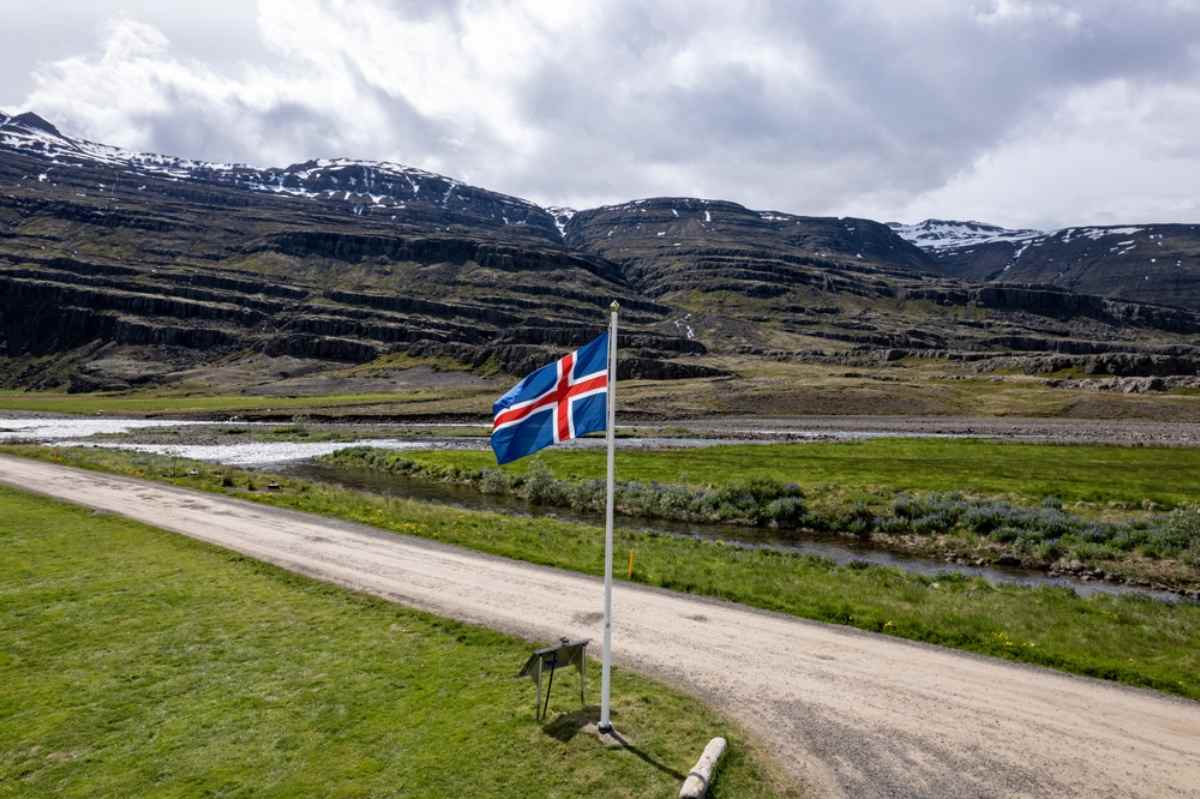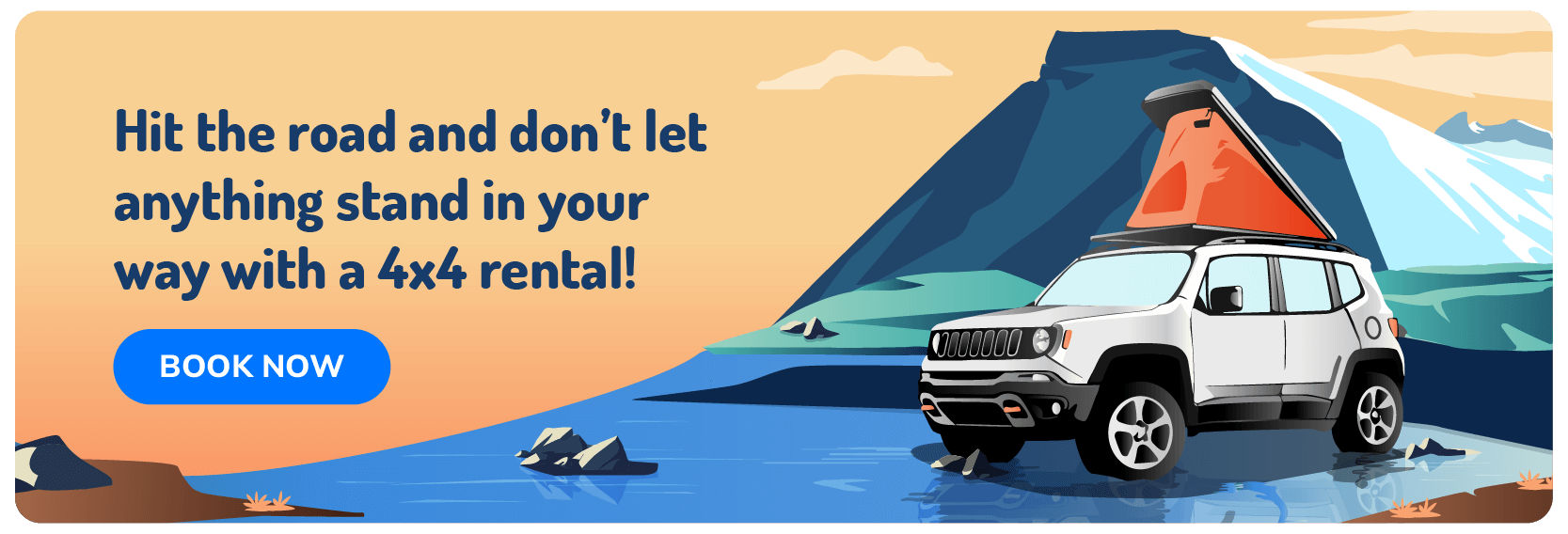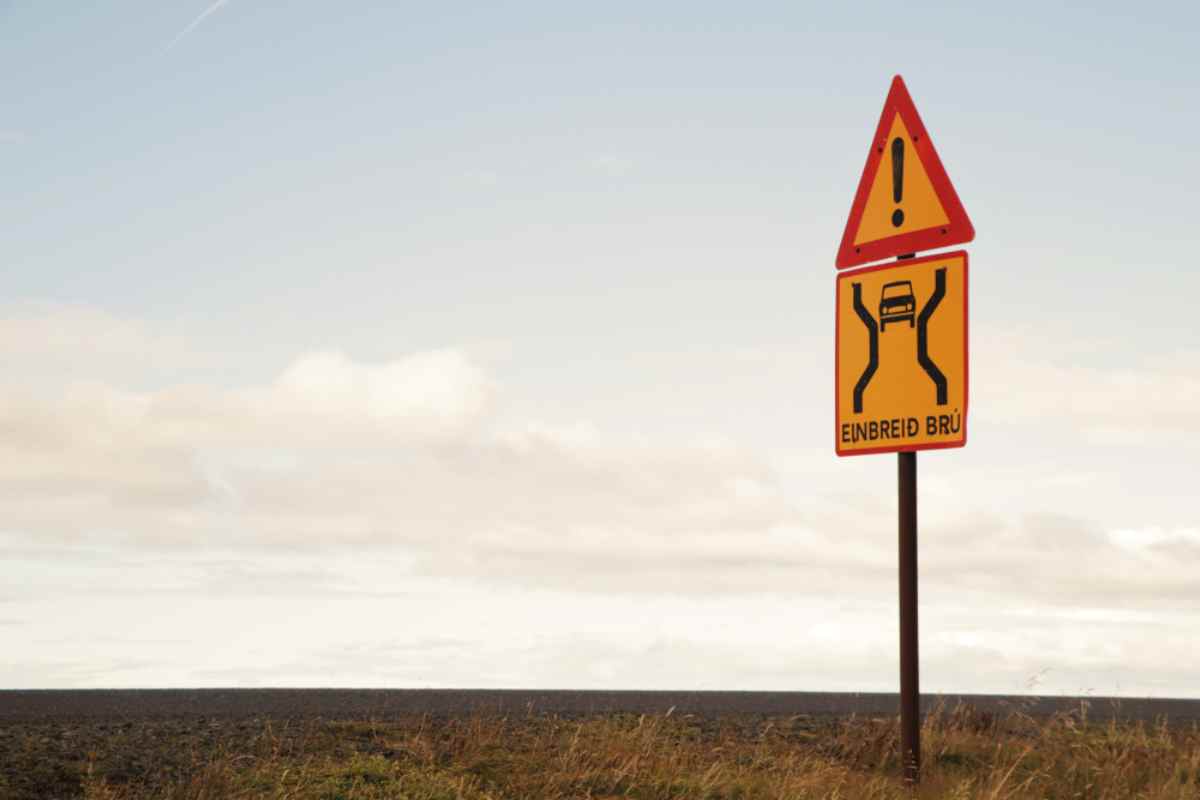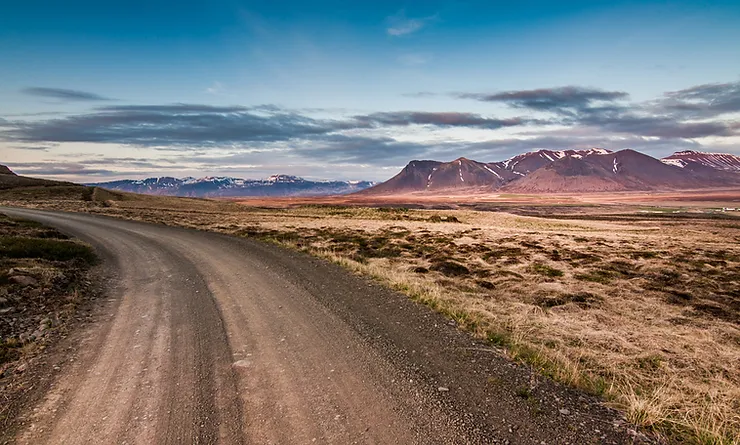If you really want to see parts of Iceland that aren’t frequently visited, especially by larger tours, you’ll need to get off the pavement. Knowing how to drive Iceland’s gravel roads with your motorhome rental will keep you safe and reduce your risk of getting into trouble along the way. Iceland is beautiful, especially when you get off the beaten path, but it takes care to drive on unpaved roads.
Gravel roads in Iceland are relatively common, so it’s vital to know how to deal with them safely.
Why Gravel Roads Matter in Iceland
Driving in Iceland requires more than just driving on paved roads, like you may be used to at home. Because you’re renting a motorhome that may feel unfamiliar to you, it’s even more important than ever to prepare yourself for any challenges you may face on the road. Here’s what you should know about gravel roads in Iceland before you arrive.
How Common Are Gravel Roads?
Your first question is likely about how common you can expect to see Iceland gravel roads. While the Ring Road is entirely paved, along with roads within the towns, you are more likely to encounter gravel roads in various parts of the country, particularly when you leave the main roadways. Driving these roads is necessary if you want to see more than just the main sights.

Where You’ll Encounter Them
Just because you’re planning to drive the Ring Road doesn’t mean you won’t encounter gravel roads. As you plan your route, you’ll need to know the most likely places you’ll find this type of road to help you make the best decisions. Some of the most common areas where gravel roads are common include the following:
- F-roads through the highlands in central Iceland
- The Westfjords, where roads are still more remote
- The Eastfjords, leading to the small fishing villages along the coast
- Interior connecting roads, primarily in the north and south
In short, if you’ll be going beyond the Ring Road and the towns along it, you can expect to encounter gravel roads at some point. Even some of the well-known locations are reached by unpaved roads, such as Dettifoss and Landmannalaugar.
Speed Limits and Regulations on Iceland’s Gravel Roads
Iceland’s road conditions typically dictate the speed limits. While they are generally well-posted, it’s valuable to understand the basic speed limits that apply unless otherwise posted, along with any regulations that specifically apply to these unpaved roads.
Official Speed Limits in Iceland
Specific speed limits apply based on location and road type, no matter where you are in Iceland. When these standards don’t apply, an alternative speed limit sign will be posted to help you stay within the limits. As of 2025, the official speed limits on all road types are the following:
- Speed limits on gravel roads are generally 80 km/h, but keep in mind that road conditions, such as potholes and other obstructions, can require slower speeds.
- The main paved roads around Iceland have a speed limit of 90 km/h, the maximum speed anywhere in the country.
- Populated areas, such as towns, will generally have 50 km/h speed limits, and thoroughways will usually be 60 km/h.
- Posted speeds in residential areas will be 30 km/h.

Keep in mind that speed limit signs may not be posted if the speed corresponds to the typical limits above, but signs will be posted when speed limits change or there is an exception.
Fines and Penalties
Iceland takes speeding seriously, even on the gravel roads. The speed limits are set based on road conditions and keep drivers safe on the road. Speed cameras can be found in numerous places, so you will need to drive carefully and stick closely to the speed limits. The following are examples of fines you may be charged if you are caught speeding:
- Driving more than 5 km/h over the limit can result in fines of 20,000 ISK ($164 USD/141 EUR)
- 26 km/h over the limit carries fines of 40,000 ISK ($328 USD/282 EUR)
- 36 km/h over the limit results in fines of 65,000-80,000 ISK ($533-$657 USD/459-565 EUR)
- 46 km/h over the limit carries fines of 130,000-150,000 ISK ($1067-$1231 USD/917-1059 EUR)
If penalties are paid within the first 30 days, you can typically get a 25% discount, reducing the fine. However, due to the high speeding fines, it’s best to drive within the limits to avoid making your trip more costly than it should be.

How to Drive Safely on Gravel Roads
Iceland road safety is of utmost importance for any road, but even more so for gravel roads. Many visitors to Iceland aren’t used to driving on gravel roads, making it necessary to understand the safest driving habits for this type of surface. Pay close attention to the Iceland road signs and avoid these mistakes:
- Not slowing down prior to transitioning from pavement to gravel
- Driving too fast for the actual road conditions
- Over-correcting from a skid
- Underestimating braking distance
- Not watching for animals in the road
- Not purchasing gravel insurance
- Ignoring warning signs for blind hills and one-lane bridges
- Driving in the middle and not allowing room for oncoming traffic
The following will help you drive more safely on Iceland’s gravel roads in various scenarios.
Handling Loose Stones and Slides
First and foremost, it’s best to drive slowly and steadily on gravel roads due to the loose stones and washboarding. Always slow down and speed up gradually as needed. Keep a light touch on the wheel and steer into the skid direction if the vehicle begins to slide. Don’t jerk the wheel or make sudden movements. Also, you should keep a good distance between your vehicle and others to reduce the damage done by flying rocks.

The Importance of Slowing Down at Blind Corners and Rises
Gravel roads, particularly Iceland F-roads, often have blind corners and rises that can make driving them treacherous. These roads are often narrow, sometimes narrower than the main roads, and off-road driving is strictly prohibited. For this reason, it’s even more important to pay attention to blind corners and rises where you may not see oncoming traffic.
Watch for road signs indicating an upcoming blind spot. Slow down as you approach, and move as far to the right of the road as possible while staying on the marked roadway. If there isn’t enough room for both vehicles, the one furthest from the narrow point should yield to the oncoming vehicle to avoid off-roading.
Single-Lane Bridges and Etiquette
Single-lane bridges can be quite common, especially on less-traveled roadways like gravel roads. Knowing how to approach them can make the experience less stressful and ensure everyone is safe. Speed limits approaching these bridges often reduce, so pay close attention to the signs.
As a general rule, whoever reaches a single-lane bridge first has the right of way. Approach the bridge slowly and keep an eye on the other side for approaching vehicles. If the way is clear, proceed across the bridge at a steady pace. If you are the second vehicle to arrive, pull as far to the right as possible, while staying on the road, giving the other driver room to exit the bridge safely.

Common Hazards on Gravel Roads
Because they are unpaved, these roads don’t receive the same maintenance as the main roads. Gravel roads tend to have potholes and may have washboarding and other uneven patches that make them challenging to drive. Always keep an eye out for sudden surface changes and adjust your driving accordingly.
Watch for standing water or larger rocks, particularly on Iceland’s F-roads. These hazards can be dangerous for non-4x4 vehicles or those without proper ground clearance. Remember, off-road driving is strictly forbidden. If you encounter a hazard you can’t go through or around without leaving the roadway, you must turn back.
In addition to rapid surface changes, sheep tend to roam in the rural areas and the highlands during the summer months. Watch for them on the road to avoid hitting and killing them. If you see sheep near the road, especially if one or more are on each side, be ready for them to run across the road without warning. Always drive extra cautiously around animals.
Vehicle Choice for Gravel Roads
If your journey will take you on gravel roads, whether or not they are F-roads, you will have to choose your rental vehicle accordingly, especially if you’re booking a motorhome or campervan. Without the right vehicle and the appropriate Iceland rental car insurance, your trip could become significantly more expensive when driving on gravel roads.
2WD vs 4x4 on Gravel Roads
Many motorhomes in Iceland are 2WD vehicles with little ground clearance, but not all of them. As you explore your options, you’ll need to take a closer look at which roads you intend to travel to determine if you should upgrade to a 4x4. While F-roads are 4x4 Iceland roads, not all gravel roads are F-roads and may still be suitable for 2WD vehicles if you are careful.
Here’s a quick comparison to help you choose:
|
2WD |
4x4 |
|
Ok for short detours along gravel roads |
Best for extensive gravel road driving |
|
Not allowed on F-roads |
Allowed for most F-roads |
|
More susceptible to damage from potholes or washboarding |
Typically have higher clearance to handle obstacles |
|
May struggle with loose gravel, especially on hills |
Better traction for loose gravel |
|
May need to drive slower |
Can drive up to the speed limit when conditions allow |
|
A lower cost option, including fuel prices |
Often costs more and uses more fuel |
Rental Company Rules and Insurance Restrictions
If you intend to drive Iceland’s gravel roads with a 2WD vehicle, be sure to talk to your rental company about whether they recommend it with the vehicle you choose. A 4x4 will be necessary if you intend to drive F-roads, but keep in mind that rental companies may restrict which F-roads are allowed for their vehicles, so be sure to ask.
In addition to any rental company-specific rules, there are some Iceland car rental insurance restrictions to consider as well. For instance, you will need to take out gravel insurance to provide extra coverage for damage caused by normal gravel roads. However, keep in mind that rental insurance doesn’t typically cover water damage due to river crossings or undercarriage damage, both of which can happen on F-roads in particular.
Driving F-Roads: What’s Legal and Required
The most important thing you need to ask yourself before renting any vehicle is whether you want to drive the F-roads. These interior highland roads are typically only open in the summer months, and many of them have river crossings that can be challenging. However, knowing whether your itinerary includes them dictates which vehicle you must rent.

While there is no actual legal requirement, when you’re renting a vehicle in Iceland, driving F-roads requires renting a 4x4 vehicle. The more clearance the vehicle has, the better. Rental agencies may also have restrictions on which F-roads are allowed. Driving on one of these roads without the proper vehicle will void your insurance, costing you significant money for damages.
Seasonal Considerations & Weather Impacts
The weather and the season you visit can also impact your ability to drive Iceland’s gravel roads. For instance, these roads are typically most suited during the summer when the weather is good. If there is a lot of rain or it snows, these roads can be difficult to drive or even impassable. Be sure to consider when you visit when deciding whether you can drive them.
Summer vs. Winter Driving
In general, driving on gravel roads is best done in the summer months when there is no snow and ice, and the roads are often dry. In many cases, the gravel roads are graded after the snow melts and the ground dries, making the early summer a more comfortable time to drive gravel roads, especially the F-roads right after they open.
However, that’s not to say that you can’t drive any gravel roads in the winter. Connecting roads that are close to settlements are still often plowed and maintained in the winter to accommodate local residents. Keep in mind that driving on snowy gravel roads may mean hidden potholes and other hazards, so drive carefully.
How to Check Daily Road Conditions
Perhaps the most important part of driving in Iceland is knowing how to check the road conditions daily. Weather changes rapidly in Iceland, no matter the time of year. Every morning, before hitting the road, visit the Icelandic meteorological website for weather conditions and the Road Administration website for road conditions.
While it’s important to check these conditions every day, it can be useful to check multiple times per day. Due to the rapid changes that can occur, flexibility is an absolute must to keep you safe on the road, especially if you’re intending to drive on unpaved roads.

Essential Tips Before You Drive
Before you start your trip, there are a few things you should do to ensure you have a safe journey. The following essential tips will help you enjoy your trip to the fullest without feeling stressed about driving in a foreign country, including on gravel roads.
Safety Checklist
When you pick up your rental car, whether you’re booking a motorhome or a traditional vehicle, there are certain things you should look for. The following is a safety checklist to ensure the vehicle you receive is safe and ready for the road. Some of these items should be checked daily.
- Understand your insurance coverage
- Verify that all lights work (headlights, taillights, fog lights, turn signals, etc.)
- Check that all seatbelts are present and in good working condition
- Evaluate tire tread and wear
- Make sure there is a spare tire and a jack or a tire repair kit
- Check if any warning lights come up after starting the vehicle
- Try the horn and windshield wipers to ensure they work
- Identify and document any existing damage
- Look for cracks or chips in the windshield
- Check that all mirrors are present and clear
- Confirm roadside assistance information
- Note the fuel level
Apps and Resources to Use
There are numerous apps and resources that can make your visit to Iceland safer and less stressful. Downloading these apps and bookmarking any relevant websites before you leave will ensure you have what you need throughout your trip. Here are the top resources to use:

- Umferdin.is (formerly Road.is): Real-time road conditions.
- SafeTravel.is: Safety information and warnings.
- Vedur.is: Local weather conditions.
- EasyPark: An app used for some parking payments.
- Parka: A parking app frequently used at tourist sites.
- 112 Iceland: An app that gives you fast access to emergency services.
- Google Maps or Maps.me: A map app can help you get around, but don’t rely solely on these resources. Cross-check them with local information on road and weather conditions.
- Tjalda.is: Lists many campgrounds, along with details and opening dates.
- Vegagerdin Road Map: Shows which roads are paved and which are not.
FAQs About Gravel Roads in Iceland
Still have questions about driving on Iceland’s gravel roads? Here are answers to some of the most commonly asked questions:
Are gravel roads dangerous in Iceland?
The answer to this question isn’t straightforward. If you aren’t ready for the conditions or have some knowledge about driving on gravel roads, they can be dangerous. However, with proper preparation and careful driving, these roads can be just as safe as any other road in Iceland.
Do you need a 4x4 to drive on gravel?
Not all gravel roads require a 4x4 vehicle. Smaller connecting roads that don’t venture far from the main roads can sometimes be driven with a 2WD vehicle if the conditions are good. However, if you intend to drive on interior roads or F-roads, you will need a 4x4 with good clearance.
Can I drive gravel roads in winter?
Some gravel roads are still maintained in the winter, particularly those that are close to settlements. If you aren’t sure if you can drive on a road in the winter, check Umferdin.is to see if the road is open and its condition. If you still aren’t sure, ask your rental company.
Are rental cars insured for gravel road damage?
Your rental car will be covered for certain gravel road damage if you choose to purchase the gravel insurance add-on. Without this add-on, damage caused on these roads is generally not covered by the standard insurance policies. However, if you drive a 2WD vehicle or any vehicle the rental company doesn’t designate as F-road-capable, your insurance will be void. Insurance generally doesn’t cover underbody damage either.
Conclusion: Driving Gravel Roads in Iceland Can Be Safe and Rewarding If Done Carefully
Iceland is a beautiful place, filled with breathtaking spots that aren’t always found along the main roads. In fact, many of the most impressive sights with fewer visitors can be found in the highlands and other areas off the beaten path. The good news is that you don’t have to worry about driving on gravel roads if you are prepared for the experience.
When renting a motorhome in Iceland with Motorhome Iceland, it’s best to know where you intend to go before renting to ensure you get the proper vehicle. If you’re interested in going on an adventure along the many gravel roads, it can be an unforgettable experience for all the right reasons when you do it safely and carefully.


